|
1. Introduction
One of the main features of the new millennium are topics related to the environment and climate change. Even though there are still theories that climate change does not exist, and that the situation should not be taken seriously, at the end of the last century, the international community finally began to give importance to this phenomenon, seeing the urgency and necessity for changes in this field. However, even after many decades, regulations and international agreements, the major powers are abusing their position to violate the agreements and acts that they willingly acceded to, creating catastrophic consequences for climate change. One of such potential abuses is the willow project. 2. What is the Willow project? ConocoPhillips’ Willow Project is a massive and decades long oil drilling venture on Alaska’s North Slope that has been exploring and drilling for oil in Alaska for years. Willow was proposed by ConocoPhillips and originally approved by the Trump administration in 2020, originally approved to construct five drill pads, but later reduced to three. The area where the project is planned holds up to 600 million barrels of oil. That oil would take years to reach the market since the project has yet to be constructed and now that the Biden administration has given the Willow project the green light, construction can begin. However, it is unclear exactly when that will happen, in large part due to impending legal challenges. Earthjustice, an environmental law group, is expected to file a complaint against the project soon and will likely seek an injunction to try to block the project from going forward. 3. Negative impact on the climate change It is estimated that this project will emit 239 million metric tons of carbon emissions into the atmosphere over the next several decades, which would be equivalent to the emissions of 64 coal-fired US power plants. Therefore, there is a good reason why environmental organizations have named this project a “carbon bomb”. In contrast to that, President of the United States has obliged to cut greenhouse gas emissions in half by 2030 compared to 2005 with the goal of achieving a net zero emissions economy by no later than 2050. Therefore, by approving the project, this plan would be highly jeopardized. Activists also state that Willow project is making no sense for the health of the Arctic or the planet, and they are supported both by local communities and law firms who already filed suits in regard with this case. One of their claims is also potential climate effects to the threatened species, including polar bears that reside in the region where the Willow Project would be constructed, stating that project violates several federal laws, including the National Environmental Policy Act (NEPA) and the Endangered Species Act (ESA). 4. Can the Willow project be a good thing? While some focus on the negative aspects, others see this project as a great opportunity. Some Senators of U.S. congress can feel Alaska’s future brightening because of it. These thoughts come mainly from the fact that this project will create thousands of new jobs, also generating billions of dollars in new revenues, improving quality of life on the North Slope and across the state. To understand this point of view, one has to know that Alaska’s economy is heavily dependent on oil extraction. Nearly 85% of the state budget comes from oil revenues. For that reason, one can understand the potential importance of this project especially for the state of Alaska, which is currently pumping less than a quarter of the oil it was moving in the 1980s. Also, it is important to add that, even if the President’s administration wanted to react, their hands are potentially tied due to existing and valid leases in the area with ConocoPhillips. They determined that legally, courts wouldn’t have allowed them to fully reject or drastically reduce the project. If they had pursued those options, they could have faced steep fines in addition to legal action from ConocoPhillips. 5. Do we have a solution? Environmental groups and ConocoPhillips are each racing against the clock. Construction on Willow can only be done during the winter season because it needs ice roads to build the rest of the oil project’s infrastructure. If environmental groups secure an injunction before then to stop or delay the project, it could delay construction for at least a year. And since the project needs to be fully constructed before the oil can be produced, it could take years for the oil pumped out of Willow to reach the market. How can you help? Immediately after the Willow project became known to the public, activists created a petition on the change.org website called "Say no to the Willow project". This petition has more than 5 million signatures so far. If this article convinced you that Willow project can be fatal for the environment and future of our planet, you can sign the petition at this link: https://www.change.org/p/joseph-r-biden-biden-administration-and-conocophillips-say-no-to-the-willow-project.
0 Comments
"How many steps have you collected so far?"
I remember that this was the main thing that my friends and I discussed about for a few months in 2019. I don't even think I've ever tried so hard to walk and move around in my life as I did then. It was great to see how the steps taken using the app turn into money that "someone out there" invests where it should be invested. If you haven't already, get to know NURDOR - "We make life easier for children with cancer and their closest by providing practical, emotional and material support. We are a national association of parents of children with cancer, made up of parents, doctors, medical staff and all people of good will", they say in the About us section of the official website. Parents whose children were treated for malignant diseases 20 years ago came up with an idea of founding NURDOR, as our interlocutor and Legal and PR advisor at NURDOR, Tamara Klaric, says, with one goal - "so that no family has to go through it the way they had to: by themselves." Today, NURDOR consists of the board of directors - the founding parents, and in addition to them, eleven other employees in Belgrade, Niš and Novi Sad. When asked how they succeeded and what she considers the greatest value of NURDOR, Tamara says - togetherness. Tamara states that the biggest and most successful project of NURDOR so far is the design, construction and equipping of the new children's hemato-oncology hospital in Niš. It is equipped with the most modern medical equipment, each room has its own bathroom and a bed for the parent, and in addition, what is perhaps the most important, there is the possibility of applying humane therapy - children receive chemotherapy while they play. "Today, it is the most modern institution for this purpose in the Balkans, built entirely thanks to donations from companies and citizens." In 2018, NURDOR completed and donated the hospital to the Niš Clinical Center. She also states that almost 1,000 families have passed through the organization in various activities so far. The latest and currently the largest project for the construction of the Parents' House in Belgrade was launched, as she says, precisely because there is not enough capacity to accommodate families in Belgrade, which is the largest therapeutic and diagnostic center in Serbia and where the majority of children actually come to be treated. . "This will be the largest Parent's House in Serbia, which will enable every family that comes to Belgrade for treatment to have free and adequate accommodation for as long as the treatment lasts." As the biggest obstacles that the organization, as well as the families they are in contact with, encounter, she states that they are mainly of an administrative and legal nature, which, especially for families, represent "a completely unnecessary additional burden on the already unimaginably difficult situation in which they find themselves." . However, in most cases, they manage to cope with the bureaucratic system, ,,which is so sluggish and slow that it often seems to be working against itself.” On the initiative of NURDOR, in 2019, after six years of fight, the law on health insurance was amended and parents of seriously ill children were given the right to sick leave for the entire duration of treatment with 100 percent of salary compensation, while the previous practice was only four months of sick leave with 60 percent of the fee. They also managed to fight for the children's right to free rehabilitation after treatment. However, she states that the lack of a pediatric cancer registry in Serbia, an information system for data analysis, which would greatly help the monitoring of all data, the number of patients and those cured, short-term and long-term consequences of treatment and therapy, etc., remains an unresolved problem. Although NURDOR has been advocating for this for many years without results, "We will continue this fight, with the never-forsaken hope that the institutions will recognize that what we are advocating for is only a change for the better." For all of us.", says Tamara. When asked if she thinks that their actions reach a "sufficient" number of people and if it is difficult to reach them today, she answered that it can always be better and that it would be great if every adult in Serbia knew about NURDOR, not because of the increase popularity, but because that way we would get a sanctified society. ,,...I am sure that you will never, in any era that humanity will go through, find a man who does not feel good when he does Good. You just have to offer people that possibility, devise a way and give them the opportunity to see that it really makes sense. If we succeed in that - then Good becomes power." I also agree with Tamara. Everyone around me, myself included, was collecting steps and feeling good. Our interlocutor describes NURDOR in one sentence with a quote from Margaret Maed: ,,Never underestimate the possibility that a small group of dedicated people can change the world. After all, they are the only ones who have done it so far." However, I would like to end this story about NURDOR, these endlessly inspiring people and their selfless goal and importance, as Tamara says and tells, with a short anecdote: "One little princess, who celebrated her third birthday in the NURDOR parent's house, after a successful operation and treatment, returned to her city with her parents. After a few days, mom noticed that she was sad and asked what was wrong with her, if she was in pain, and she replied: "I would like to go home to Belgrade." The exhibition Mileva: “We are one rock” was opened on New Year's Eve in the Museum of the City of Novi Sad, at the Petrovaradin Fortress, and presents the public and private life of the scientist Mileva Marić Einstein through the combination of art and science.
Mileva Marić Einstein, Serbian physicist and mathematician, was born on December 19, 1875 in Titel, and died on August 4, 1948 in Zurich, Switzerland. She attended the Girls’ High School in Novi Sad, and graduated from “Realka” in Sremska Mitrovica in 1890 as the best in her class in physics and mathematics. She was only the fifth woman to be admitted to the Swiss Federal Institute of Technology in Zurich in 1886, where she met her future husband, Albert Einstein. Mileva and Albert were married in 1903 and divorced in 1919. What is still controversial is Mileva's contribution to Einstein's scientific work. It is known that Mileva's average in physics at university was 5.5, just like Albert's. Mileva and Albert did work together, but one of them was denied recognition for their joint work. Unfortunately, due to the lack of documents that would confirm this, modern science does not recognize the genius of Mileva Marić and her significant contribution to science to the extent that it should. What is interesting is that in Novi Sad, on the street Kisačka 20, the family house of Mileva Marić Einstein, where Mileva and Albert lived for some time, was located. The house was built in 1907 and renovated in 2019. There are stories that, while they were staying there, Albert was nicknamed "the goofy son-in-law of Marić" because of his unconventional behavior and long, disheveled hair. Due to the scarcity of information about the life of this great scientist, we can learn about her based on the letters that Mileva and Albert exchanged. It was in these letters that the artist Dušan Jovović found inspiration for this exhibition. The exhibition consists of 12 units, and the space is divided in the composition into "light" and "dark" and they form one inseparable unit. The entire exhibition involves a combination of different types of art and technology such as 3D animation, digital sound, hologram, as well as sculpture, graphic design, drawings and paintings. We invite you to visit the exhibition, which is open for the next 3 years, and in this way pay tribute to Mileva's character and work, which certainly deserved it. Each room has a certain significance or represents some aspect of Mileva's life. According to the author of the exhibition, the dark tunnel at the very beginning of the exhibition represents a metaphor that marks the entry into the "bright mind" of the scientist. In the middle of the first room there is a white bicycle, which was characteristic of Vojvodina and was important for this scientist, because she had difficulties with walking. When you sit on it and turn the pedals, "Mileva's perspective" opens before us. The closer we are to the end of the exhibition, the more we move away from the light, which marked the productive period of her life, and get closer to the darkness, which represents that part of her life filled with suffering due to divorce and illness. The firefly in this exhibition carries the meaning of life, new possibilities and infinity, and the author of the exhibition found the inspiration for that metaphor during Mileva’s stay in Titel, at the moment when she watched the choreography of fireflies above the Titel hill, and one of the rooms in the Museum is dedicated to this very moment. The reason for being fascinated by this exhibition is not only because we see in it a combination of art, science and new technologies, but because we can experience different emotions by observing different aspects of Mileva Marić's life. What stirs the emotions is not only the narrative of Mileva's life, but also the combination of warm and cool colors, light and dark, and projection. The projection of water and the waves moving on the ceiling and the waterfall descending to the rock form a magical image that leaves the viewer mesmerized. The exhibition came to life with its interactivity, the grand piano in one room conveys with its notes the feelings that Mileva felt in difficult moments, and her hologram speaking in Serbian and German gives us the impression that she is in the room with us at that moment. From this exhibition, one can learn a lot about Mileva's life from a more personal perspective, rather than from a biography, documentary or any book. The melancholic atmosphere, the rich symbolism of the exhibition and the importance of this scientist as a person, as well as her work, will definitely remain etched in our memories after visiting the exhibition. Also, the exhibition invites us to view Mileva not as a victim, but as a brave and brilliant figure who opened a scientific window to the expanses of space. We invite you to visit the exhibition, which is open for the next 3 years, and in this way pay tribute to Mileva's character and work, which certainly deserved it. Authors: Teodora Šiklošić and Katarina Klisura Central European Exchange Programme for University Studies CEEPUS enables students and professors from various higher education institutions accross Serbia to participate in academic mobility activities. The CEEPUS program has been carried out successfully for almost thirty years and up until now, it includes as many as fifteen member states of Central Europe: Austria, Albania, Bosnia and Herzegovina, Bulgaria, Macedonia, Hungary, Moldova, Poland, Romania, Slovakia, Serbia, Slovenia, Croatia, Montenegro and the Czech Republic. Although the program also enables teachers to apply for mobility activites, as already indicated, it pays more attention to students’ mobility, thus enabling them to attend courses at academic institutions abroad, take exams, improve their domain-specific and soft skills, conduct scientific research, get in touch with foreign students and much more! A few times a year, several foreign higher education institutions make mobility calls when students can apply for a program that is related to the field that they are studying in their home country. This is an open call, so all students across Serbia have the opportunity to apply by filling out a form in which they express their interests and educational goals that they would like to achieve within the program. Hereby candidates can also declare whether they would like to participate in full semestral activities, such as attending courses and passing exams to achieve ESPB points, or whether they would want to participate in shorter academic exchanges lasting up to three months, which are generally realized to conduct research and/or work on a master's or doctoral thesis. The application process also involves a submission of a short autobiography and motivation letter. If the applicants pass the selection, the country in which the mobility program is being carried out provides a complete student scholarship for the specified duration of mobility. The scholarship paid a sum of money for a stay abroad, as well as accommodation in a student dormitory, meals in a student canteen and health insurance. I had the opportunity to participate in this mobility program. I spent a month studying in Croatia at the Department of Psychology at the Faculty of Philosophy of the University of Rijeka. After I received the information that I had been accepted to the program, with my mentor from my home faculty, dr Kaja Damnjanović, I contacted professor dr Igor Bajšanski who happens to be interested in the same research field as the two of us. During my month-long stay, the three of us have conducted research in the field of complex cognition called "Confident and with good reason?" Relationship between judgment of task-solving ability and final judgment of confidence on syllogistic reasoning tasks". We presented that research the following year at the "Empirical Research in Psychology" conference, where we won the award for the best poster presentation. In addition to the fact that this exchange enabled me to improve professionally and conduct scientific research work in the field that I am interested in, for which I was later awarded, it first of all brought me a handful of friends from Croatia, with whom I still stay in touch to this day and who I look forward seeing to. I highly encourage all interested students to read more about open-call applications regarding CEEPUS network mobility for 2022/2023. year via the following link https://www.ceepus.info/default.aspx#nbb, and I also encourage them to apply for one of the programs via the following page
https://www.ceepus.info/default.aspx#nbb. Good luck to everyone! This year we celebrate the 150th anniversary of the birth of Nadežda Petrović. This lady which we can see on the 200 dinars banknote is a very talented painter. However, Nadežda Petrović was very versatile, so she dealt with art criticism, photography, pedagogical work, women's emancipation, but also political and national issues. She had done many important things for the Serbian people and giving her life for them. She died of typhus at the age of 42, and contracted it while working as a nurse in the war. She volunteered because she felt it was her duty. She healed many wounded soldiers, but in the end she could not help herself. Serbian society was patriarchal at the beginning of the 20th century; women's needs were disregarded. The Serbian Civil Code provided for the authority of the husband over his wife. Within the framework of property law, the incompetence of a married woman was particularly highlighted. A married woman was equal to a child. Maybe that is why it is not surprising that Nadežda broke off her engagement and wrote in a letter to her mother that she was happy because she did not get married. "I am not looking for love, husband, man or heart and respect, I will live only for myself and my parents. (...) There is no question of my marriage anymore, I want to be a painter, not a wife (...) if you really want me to be happy, then you will only expect me to be a painter, not a bride." ( Munich, 1898) She was an important figure during the founding of the Circle of Serbian Sisters. This organization brought together women who carried out numerous societal actions.
Some define this association as humanitarian, others emphasize the patriotic element, and some historians see a feminist moment. In those years, Nadežda put a lot of effort into organizing the First Yugoslav Exhibition, in which artists from Serbia, Croatia, Slovenia and Bulgaria took part. Although Nadežda Petrovic's paintings were in line with the most contemporary art trends in Europe, critics in Serbia did not respond well to them. Nadežda did not care much about it. She was a woman with great confidence and courage and she believed in what she was doing. Exhibition NADEŽDA PETROVIĆ. MODERNITY AND THE NATION at the National Museum of Serbia was organized in Nadežda's honor. This exhibition is open until April 15th. I highly recommend you to visit it and find out more interesting information about this great artist and heroine. Author: Jelena Čolović Teodora Mašković Đeri, the Studenica Foundation scholar and second-year psychology student at the Faculty of Philosophy at the University of Belgrade, had the opportunity to participate live in the seventh European Psychoanalytic Conference For University Students in Brussels, which was about repetition and transformation in modern psychoanalysis. She listened to various lectures and participated in two-panel discussions, one about the reflection of the body-mind relationship, and the other about the transgenerational repetition in children. She decided to share her experience with us.
"Participating in an event like this is priceless and I am very grateful and honoured to be invited to listen and learn from truly exceptional experts who come from all over the world and discuss psychoanalytic therapy with them. I believe that it is very important to become familiar with the principles of modern psychoanalysis and to break the prejudices that exist regarding therapy. This conference expanded my knowledge about therapy, which is a very complex process, and encouraged me to think about training for a therapist in the future", says our scholar Teodora. She points out that she learned a lot about the human psyche from following lectures that were about transgenerational trauma, the modern interpretation of dreams, the influence of events from the past on the present, psychoanalytic therapy for children and brain activity during therapy. In addition, she met and became friends with the participants of the conference - foreign students of psychology and medicine who are also in education for psychoanalytic therapy, with whom she had very rich discussions after the lectures. Next year, she will also be one of the participants at this conference. Our scholarship holder Teodora would like to point out the importance of organizing such projects for young people that deal with mental health topics and invites all young people to attend such conferences and similar projects. Dear You,
When I started going on this sudden journey, I had no idea how much my perception of the world would change. I traveled 28 hours by bus to Kuşadasi with many unknown faces who will play a significant role by the end of this story. I can write you a book about my experiences in Turkey, which is not difficult - every visitor needs only a little peek into its soul to remain enchanted forever. Therefore, I will do my best to convey at least one part of it in a couple of pages. Kuşadasi is a cute little town by the sea. It has its soul, as one coastal town with promenade by the sea should have. Its narrow streets paved with white marble are full of music coming from street musicians, carpet shops, quirky souvenir shops, teahouses full of various herbs, intrigued tourists, and interesting vendors. The smell of tempting Turkish sweets such as baklava and halva can be felt, spreading and creeping into every corner of the city. Of course, I tried my best to experience everything that one tourist can. I entered many souvenir shops attracted by the glittering lamps and candlesticks, which is not uncommon here. Yes, I tried all possible sweets in one of the stores, but I just had to. Okay, I brought some and nobody knows how it survived until home. I also drank tea and ate baklava, don't worry. Well, I also tried the ice cream that they take out of your hand called dondrum made from salep powder and mastic which has a very interestingly strange structure. I also went to the small pirate peninsula of pigeons known as Güvercinada and its ancient fortress. Kuşadasi was named after it (Kuş - bird, ada - island). But what left the biggest impression on me, the place where I left a part of myself, is Pamukkale. I fought a battle within myself about whether to visit them or not because there are rumors that they have dried up and are not what they used to be. I decided to go even if rumors were true - not knowing what to expect, I went on a 4-hour trip alone to see this natural wonder. The cotton castle knocked me off my feet. On the way to Pamukkale, you have to pass the beautiful cotton fields of the town Denizli, and then the remains of the ancient city Hierapolis, which are very rich with history. The Temple of Apollo and Pluto, the Gate of Domitius, and the massive and well-preserved Roman amphitheater are just a small part of those remains. In addition, there is a whole museum full of objects that carry great value from those times. It is even said that Cleopatra enjoyed the riches of this city. After visiting the museum, amphitheater, and Cleopatra's bath, suddenly white calcium travertines appear in front of me. My breath has stopped. There it was. A look that cannot be conveyed with words or a brush stroke. It must be experienced. To feel that white stone under your feet, that healing water the color of the sky, all that scene created by the artist better than all - nature. She never ceases to amaze me with her gift. She makes this world such a beautiful place to be present in. All in all, Pamukkale is a place that you should experience if you have the chance. This time I didn't get to visit the famous ancient city of Ephesus, Istanbul, and Cappadocia, which only means that I will be back soon to write more postcards from this wonderful country. Until the next postcard, Teodora Mia Brzaković, the Studenica Foundation scholar, was recently chosen as the International Student of the Year by the Union of Students of Ireland. Mia has been studying biomedical engineering in Ireland for four years, and during her studies, she was a member and held positions on the executive boards of several dozen student organizations, both Serbian and Irish, as well as international. She also worked at Student2Student, an organization that is supporting students who come to attend Trinity as freshmen or as international exchange students, and organized welcoming and socializing events for students. After arriving in Ireland in her first year, in cooperation with the Organization of Serbian Students Abroad, she managed to establish a branch in this country within the first few months and gather distinguished students from all universities throughout the country. International students often face difficult challenges while attempting to integrate into Ireland, not only because they are far from family and the comforts of home, but also because they encounter significant differences in the new education system. Experience has shown that when they are supported on arrival, they very quickly acquire an important and valued role in activities on and off campus, and it is essential that their activism be supported. Therefore, Mia strove to achieve just that in her environment. "It is a great honour for me to be recognized as the International student of the year. I am glad that through my previous work and activism, I managed to create a change in my environment that will make it easier for future generations to integrate and successfully fit into the new student life abroad. I still sincerely believe that each of us can make an extra effort and make that small change in our environment and that working together will make a positive difference for our future!” Ms Brzaković said. At the ceremony, along with her colleagues Rachel Murphy and Courtney McGrath, who received the awards for Equality Campaign of the Year and Student Media of the Year, she was delighted to represent Trinity Students' Union as well as her University. Mia was also the student convenor at her faculty and in the past year, regardless of the challenges we faced, she managed to raise the importance of the student's voice in making important decisions at the faculty and university level. This year, as one of the outstanding students of her generation, she got a place at a prestigious university in America in order to expand her knowledge in biomedical sciences and use the exchange so that she could apply those experiences in Europe upon her return.
In addition to the aforementioned activities, Mia is also active in organisations in Serbia, where she attempts to bring our students closer to opportunities related to personal and professional development, both domestic and abroad. She is also one of the few students from the region who was chosen by the European Student Union as a student expert for the Accreditation of multi-level programs at universities and works together with accreditation bodies and organizations to improve the quality of education around Europe. In the future, he hopes to be able to combine his expertise in all the mentioned areas and continue her progress, as well as help other students fit in more easily and find their new home in the country where they come to study. Our scholar, Jelena Čolović, stood out in the competition for the best activist story, which was announced by the Institute for Media and Clarity and the Umbrella Organization of the Youth of Serbia. Her story was one of the best in the opinion of the jury, so she got the opportunity to present it publicly at the conference "YOUTH speak, YOUTH listen". Below you can read her work and conclude why she was awarded. Use the potential of the media for the right things I am studying journalism and I would like to dedicate my whole life to the media. I have been working on it intensively for the last few years. As a high school student, I became interested in reporting on current events. I am excited by the dynamism of the journalist's call and the thought that I can help people and contribute to the development of society. The media has great power. They are one of the important subjects of socialization, and journalists are the eyes and ears of the public. When I was in the fourth grade of high school, I edited the school newspaper. Then I connected to the local NMR info portal. I wrote about events, plays, village celebrations and all the events that I could go to. I conducted interviews with interesting residents of our small Banat towns. They are witnesses of a time, but there was no place for their stories in the big media. It bothered me that I noticed that culture, art, education and science were on the sidelines. I think that art ennobles and should be given more space. I started writing for the iSerbia portal and there I went through mentor training and they gave me the chance to write about those topics. I then connected with the portal of the Belgrade Open School. The Mingle portal is aimed at young people. This encouraged me to look for young people who are enthusiastic, hardworking, creative, unusual and inspiring. They are my favorite interlocutors. Every conversation with them is challenging and instructive for me. I was very happy when I interviewed a creative assistant from the Faculty of Electrical Engineering in Belgrade. He wanted to make teaching easier and more interesting for the students, so he recorded rap songs whose content refers to mathematical formulas and tasks. Later, Stefan Spalević was a guest in other media, and at the end of that year he received the PS Press award for the 50 most creative contents on the Internet. (https://www.iserbia.rs/oni-inspirisu/stefan-spalevic-matematika-i-rep-idu-zajedno-3009) I am studying journalism and I would like to dedicate my whole life to the media. I have been working on it intensively for the last few years. As a high school student, I became interested in reporting on current events. I am excited by the dynamism of the journalist's call and the thought that I can help people and contribute to the development of society. The media has great power. They are one of the important subjects of socialization, and journalists are the eyes and ears of the public. When I was in the fourth grade of high school, I edited the school newspaper. Then I connected to the local NMR info portal. I wrote about events, plays, village celebrations and all the events that I could go to. I conducted interviews with interesting residents of our small Banat towns. They are witnesses of a time, but there was no place for their stories in the big media. A very poignant but interesting story was told to me by Matti Kamberi, a Roma who grew up in orphanages and foster families and who did not know how to read and write until the age of 12. However, that boy rose from the mud and fell in love with the book to write his autobiography "The City of Pain" at the age of 19. When I interviewed him, the book had just gone on sale. It was later reprinted and had several editions. The second followed, and his third book was recently published. Few people knew about Mattie, and his combativeness and mental strength deserve the bow he later received. (http://www.mingl.rs/apdejt/61/2020/06/03/mingl-intervju_-meti-kamberi-i-grad-bola.html )
When I first stumbled upon the lyrics of Kosta Kosovac, I was speechless. A person is born a poet and it is a gift that few people are born with, that was my thought. You don't expect such conciseness and wisdom from a person who is only 20 years old. I wanted to tell people about him, to point out to everyone the talent that delighted me. The media was my ally. After I had prepared well, I contacted him and he agreed to the interview. About a year passed, and Kosta called me to tell me that his first collection of poetry had been published by the Serbian Literary Cooperative. (https://www.mingl.rs/rubrike/mingl-kutak/2/2020/10/30/mingl-intervju_-poeziju-neces-naci-nigde-ako-je-prvo-ne-nades-u-sebi.html ) I singled out these few people for whom I am very happy. I am glad that I met them and passed on the story of them and what they do. Also, once I decided to support a friend who organized an environmental action in his area. The report from that event was also reported by the Danas.rs portal, after which they offered me an internship with them. (https://www.danas.rs/vesti/beograd/mladi-za-tri-sata-ocistili-otpad-koji-se-godinama-talozio-u-visnjickoj-banji-foto/ ) In the student radio show "Slušaonica 6", I hosted experts in the field of psychology, fighters for human and labor rights, artists, people dealing with the fight against corruption... I recently wrote an extensive article on the impact of air pollution on the health of young people. I learned a lot about the subject and I am grateful to everyone who helped me. When the people who follow the analytics informed me that a total of about 100,000 reactions to that text were recorded, I was happy and it encourages me to try even harder. (https://www.mingl.rs/rubrike/mingl-kutak/2/5053/vazduh-koji-oduzima-dah.html ) That's how I use the media. The media has helped me a lot to spread important messages and interesting stories. I'll keep working on it! Themes are all around us. Jelena Colović After a three-year break due to the bad epidemiological situation, the 61st Congress of Students of Biomedical Sciences of Serbia with international participation was held from April 25 to 29 this year. It is the largest student congress of its kind in our country. Every year, the Congress gathers students who present their scientific research papers in the field of biomedicine. With the help and through cooperation with the mentor, they decide on the field and subject from which they want to write the paper and start research. Organized by the Faculty of Dentistry of the University of Belgrade, this year's participants were 13 faculties with over 1000 students. For four days, as long as the congress lasted, the central part of the day were sessions in which students exhibited their works. Between them, students had the opportunity to participate in over 15 workshops on various topics every day, where they could hear useful advice and stories from professors and doctors. This year's participants were also our scholarship holders Mladen Hadži Makunčević from the Medical Faculty of the Military Medical Academy of the University of Defense in Belgrade and Aleksandar Milenković from the Medical Faculty of the University of Prishtina with a temporary headquarters in Kosovska Mitrovica. Scholars share their experiences with us. Mladen Hadži Makunčević: "My work dealt with the most common symptomatology and the way of dealing with the consequences of acute abuse of non-standard psychoactive substances. Due to the growing presence and abuse, in this way psychoactive substances without standard tests for drugs, such as heroin, cocaine, marijuana, amphetamines, are negative. I presented the data of my institution, which is also the national center for poison control. " Mladen Hadži Makunčević: "My work dealt with the most common symptomatology and the way of dealing with the consequences of acute abuse of non-standard psychoactive substances. Due to the growing presence and abuse, in this way psychoactive substances without standard tests for drugs, such as heroin, cocaine, marijuana, amphetamines, are negative. I presented the data of my institution, which is also the national center for poison control. "
Aleksandar Milenković: "Due to the devastating statistics that follow the Republic of Serbia in the last few years in the number of cervical cancer patients, my mentor Prof. Vitković and I tried to prove the connection between HPV infection and premalignant and malignant lesions at the cellular level. The main goal was to apply scientific facts for the purpose of prevention, early diagnosis and saving women's lives. I believe that the subject of my work is molecular biomarkers, the future of preventive medicine. The Congress brought me new knowledge, experiences and acquaintances, which is the most valuable part of it. " See also photos from the event below. |
AuthorFellows of Studenicca Foundation Archives
June 2024
Categories |
OUR WORK |
ABOUT US |
|

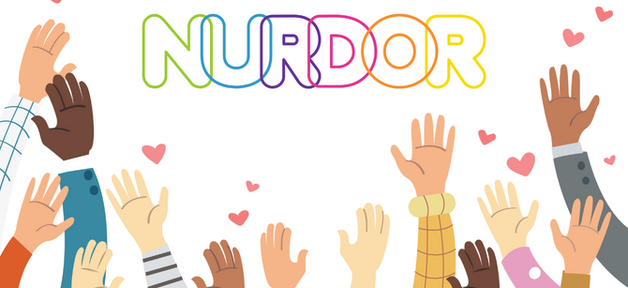
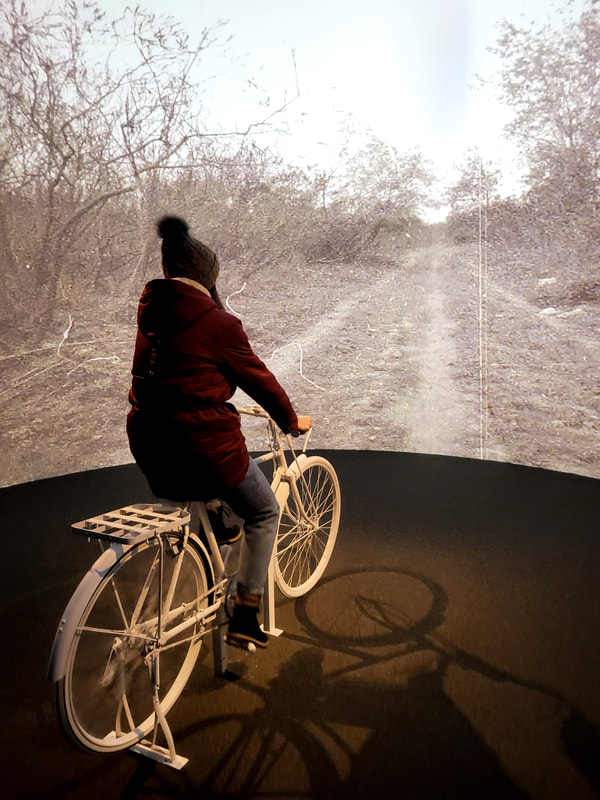
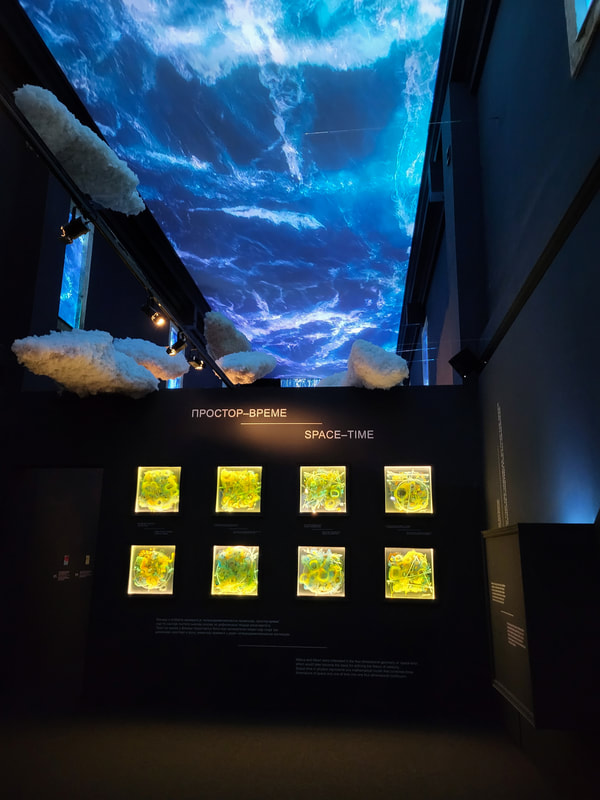
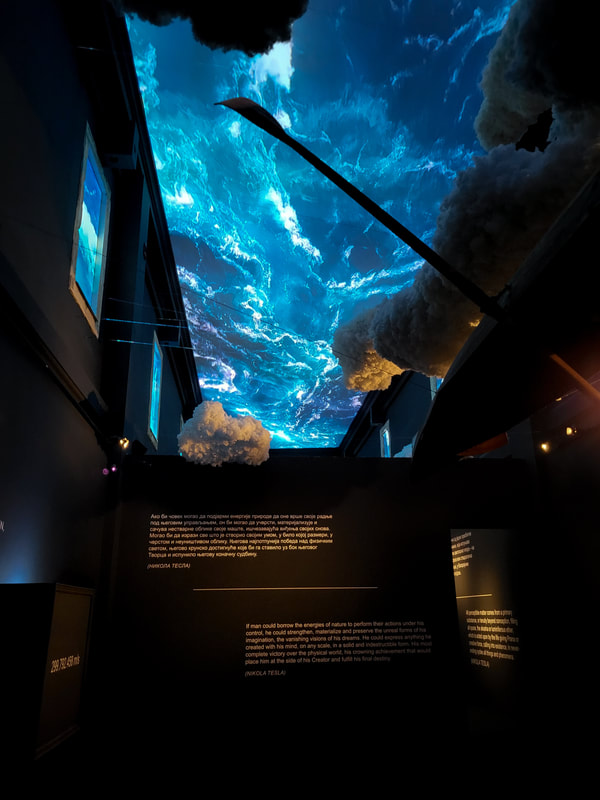
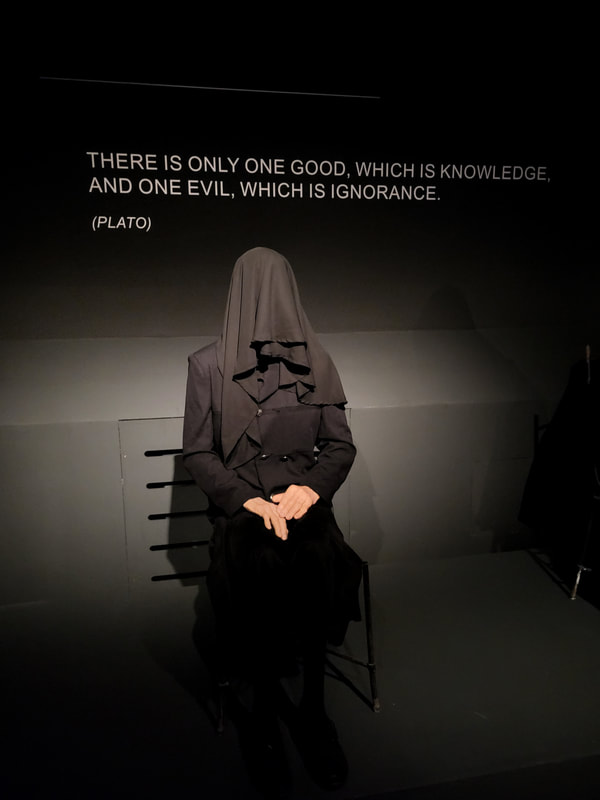
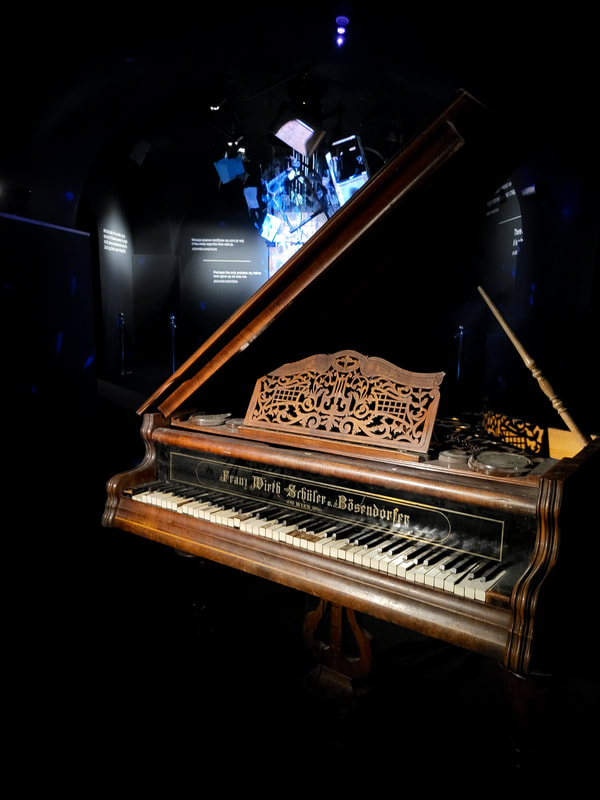
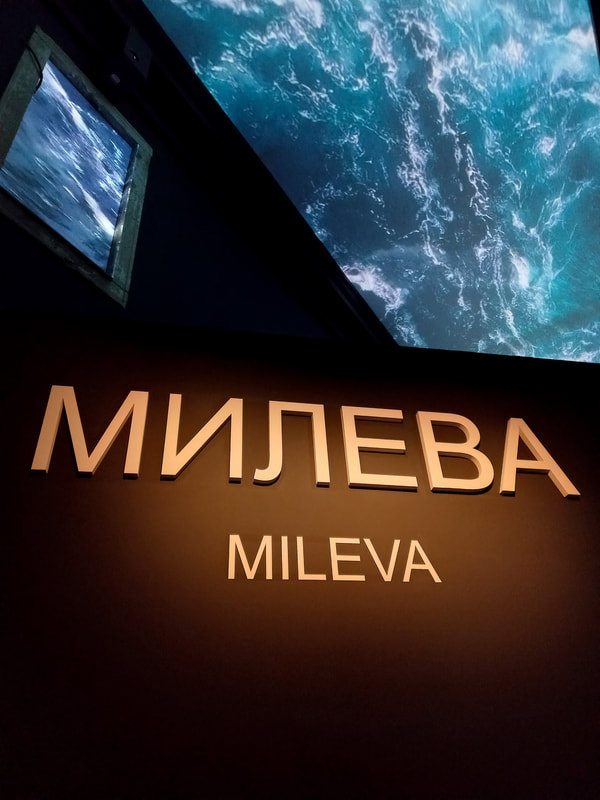
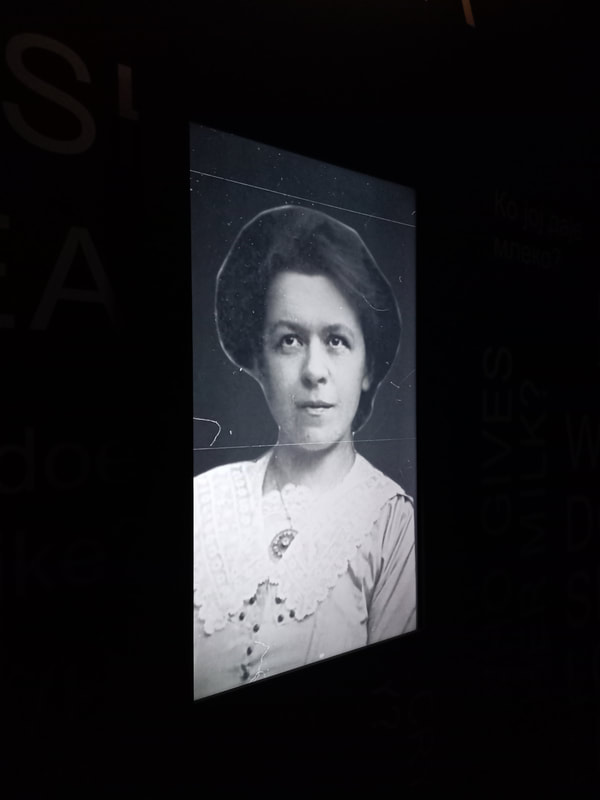
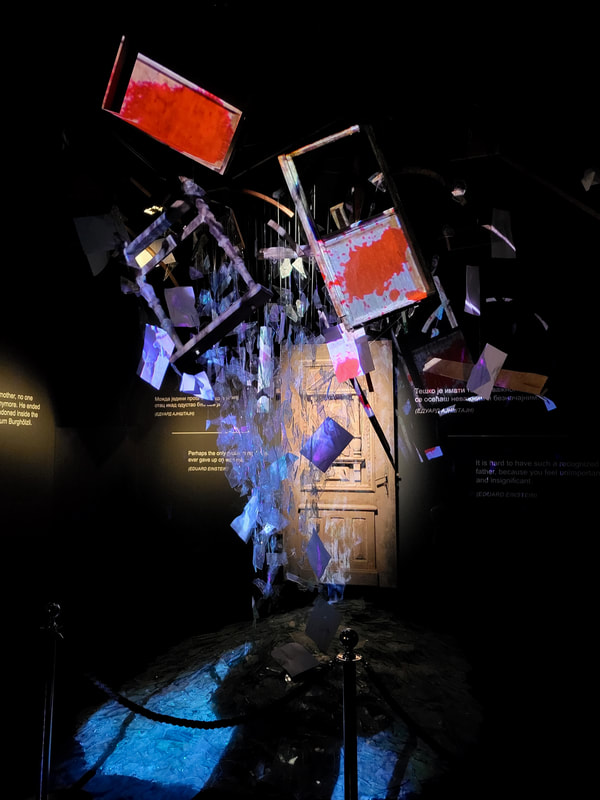
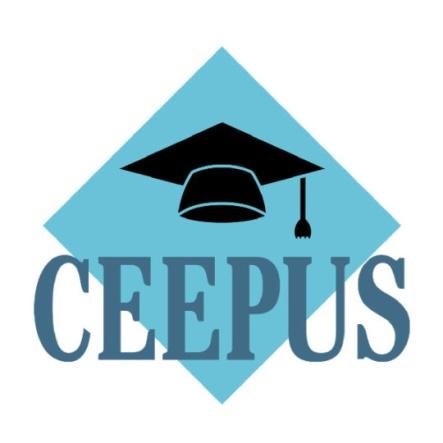
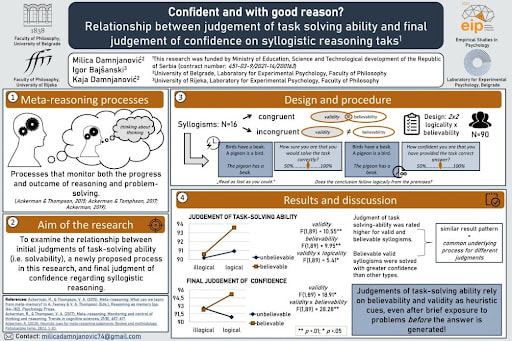

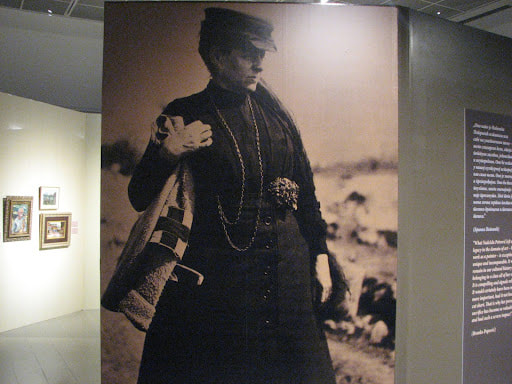
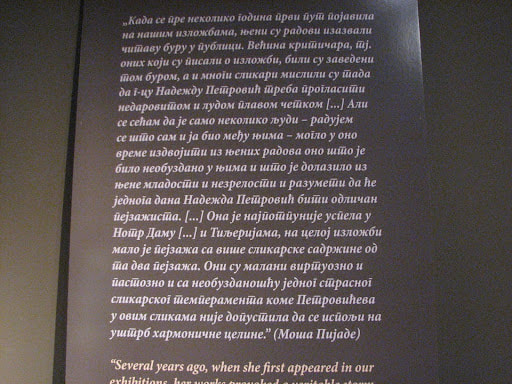
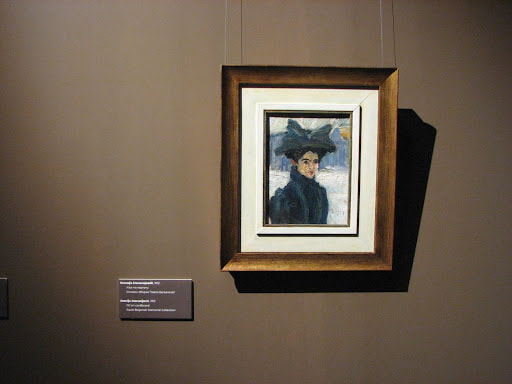
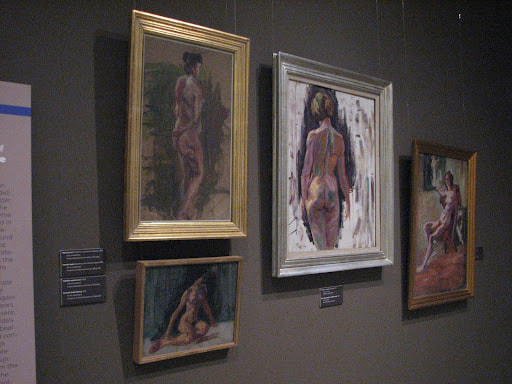
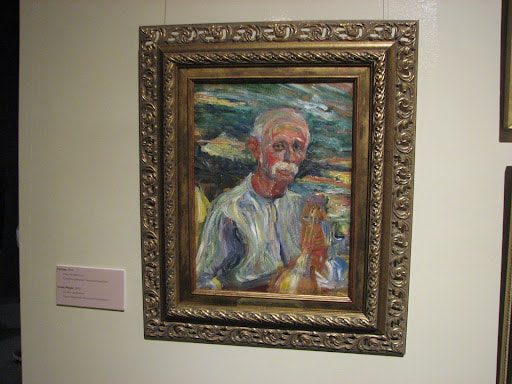
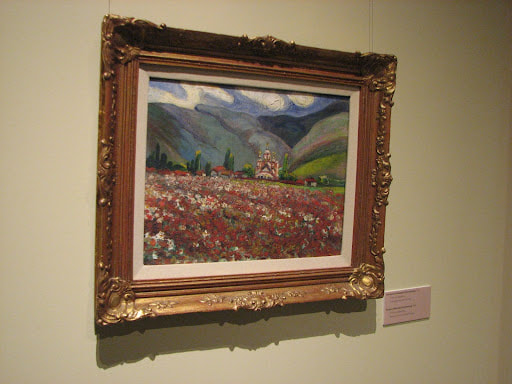
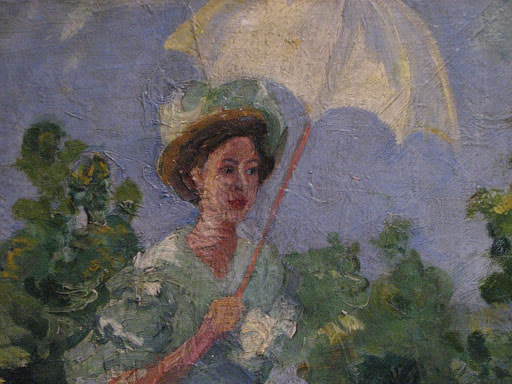
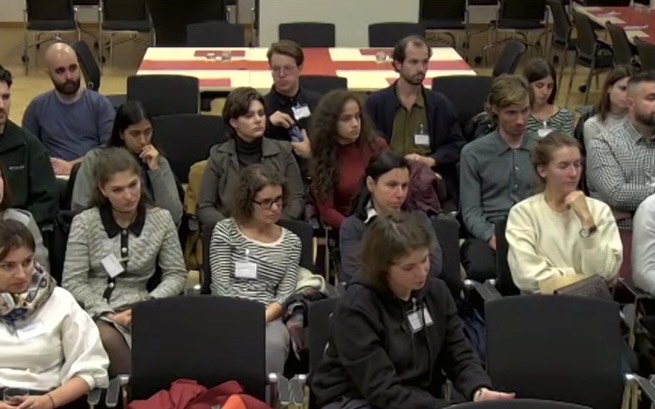
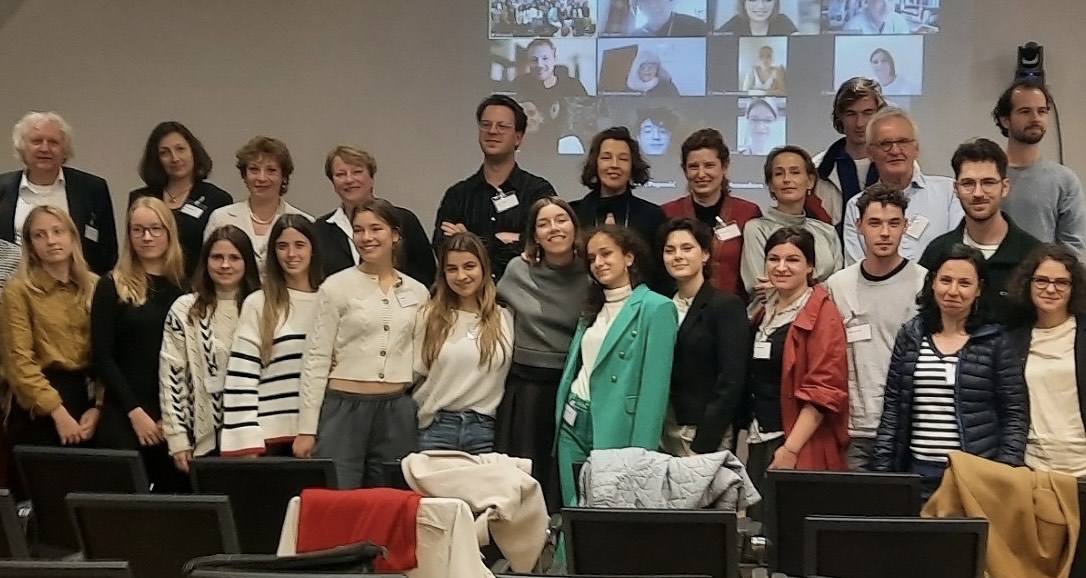
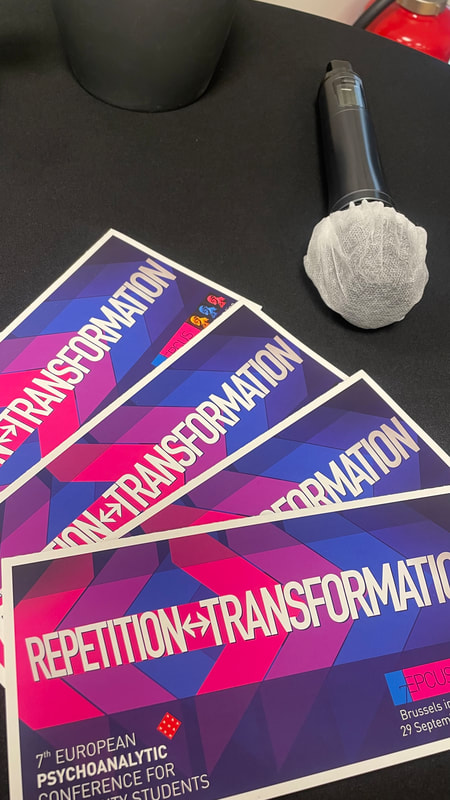
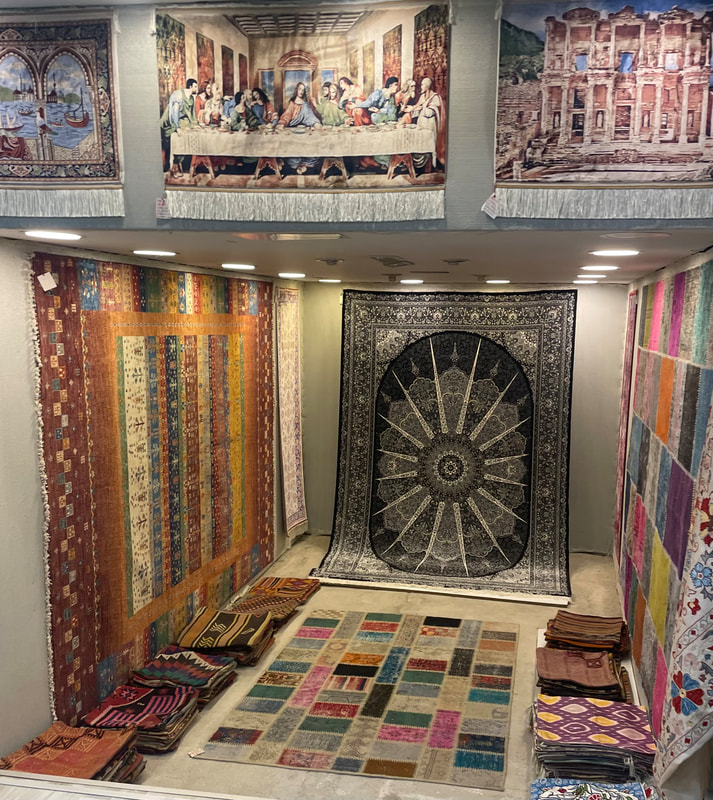
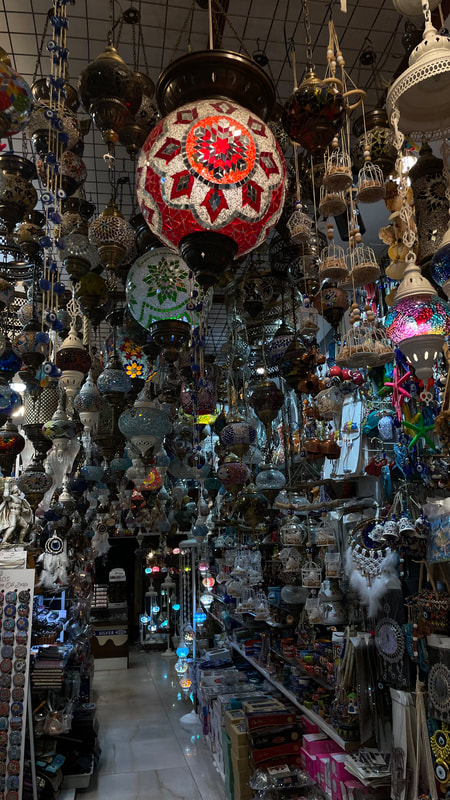
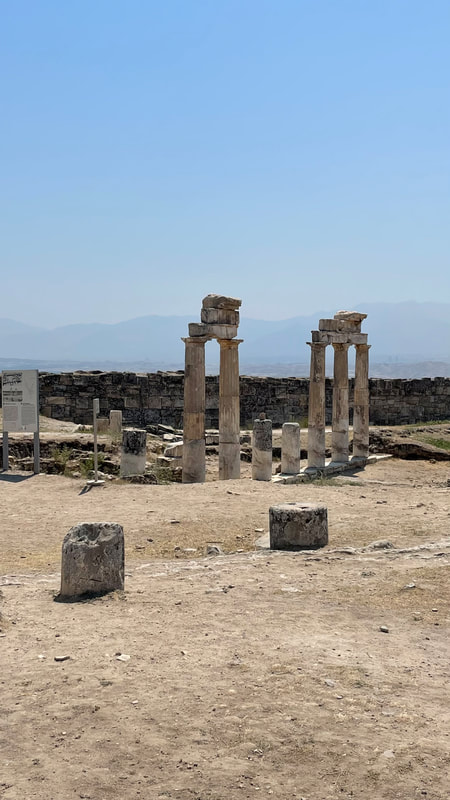
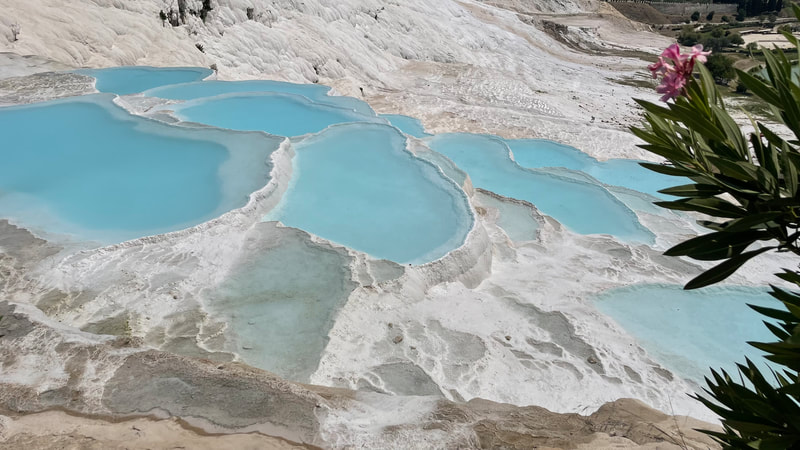
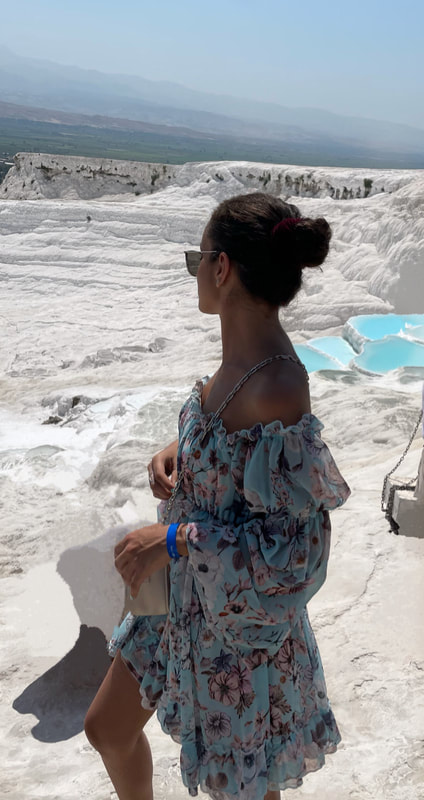
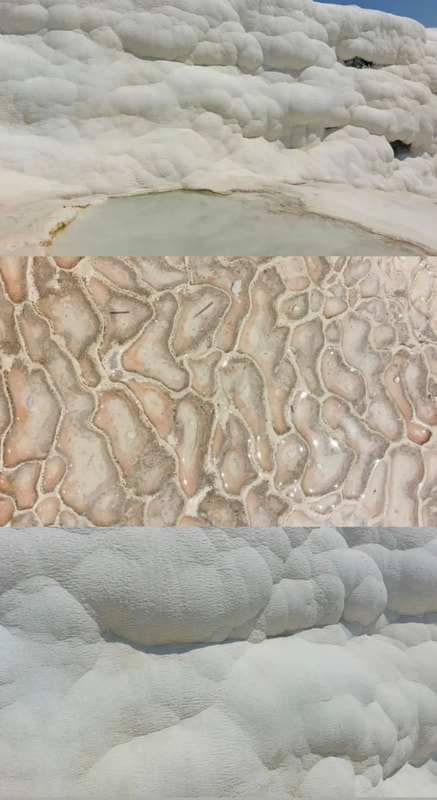
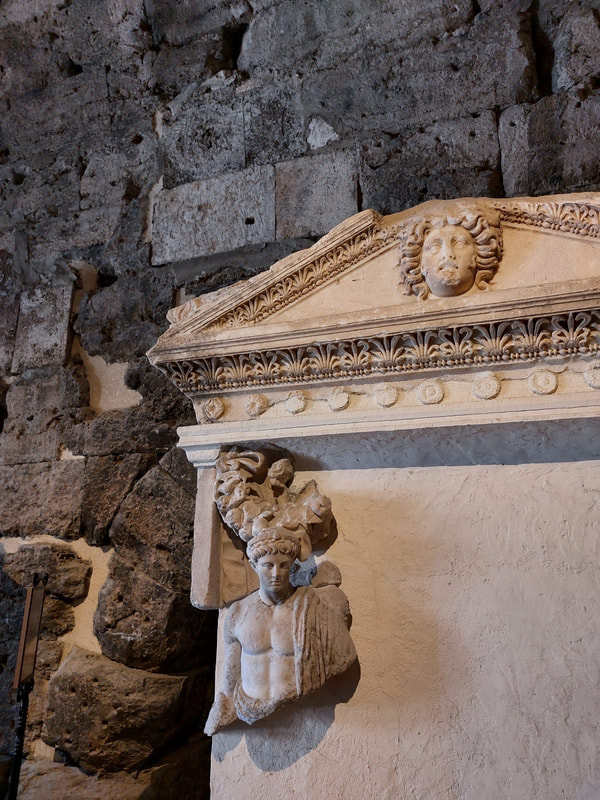
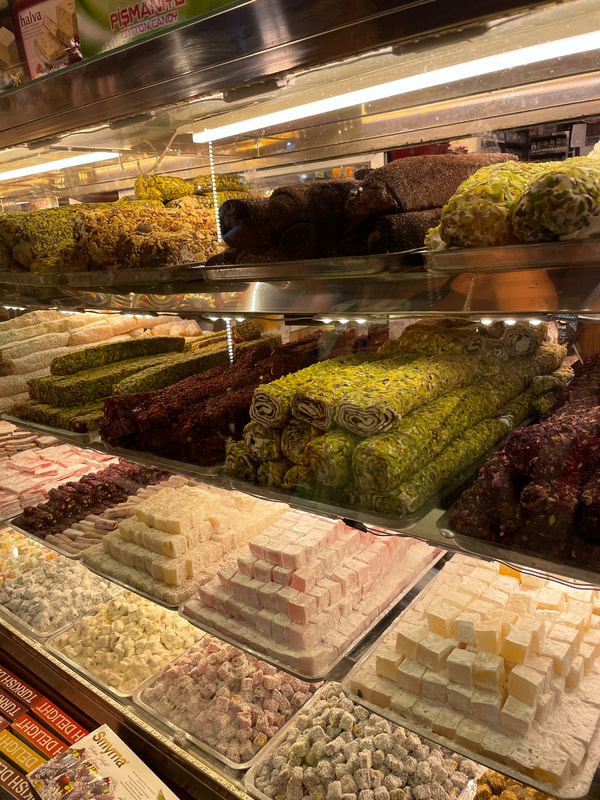
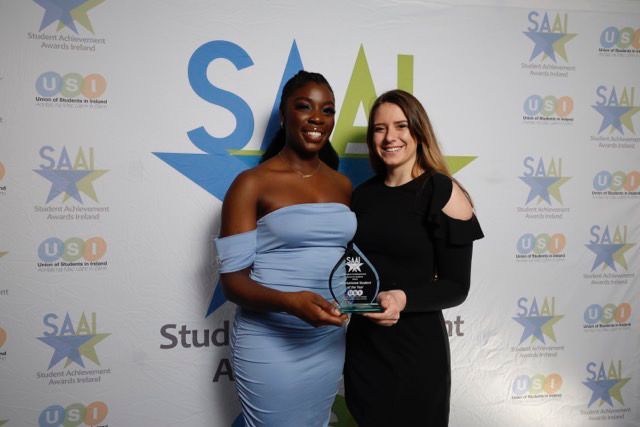
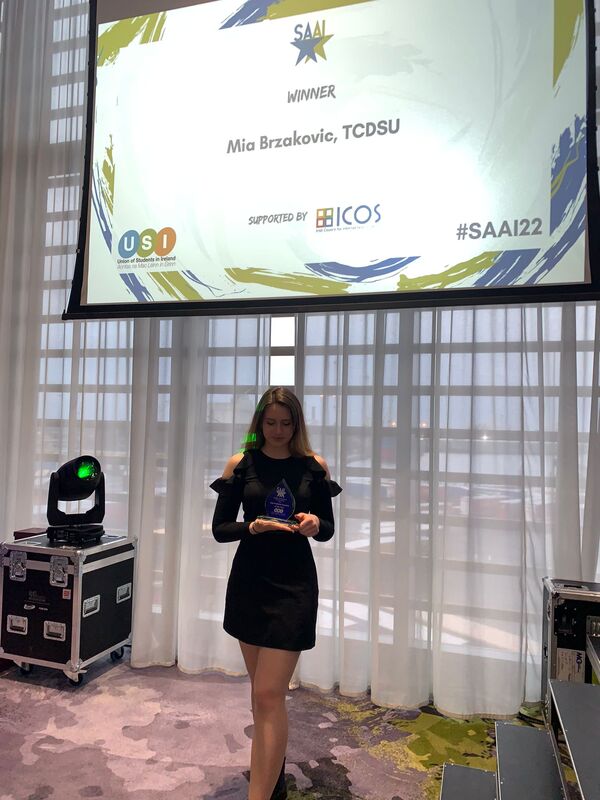
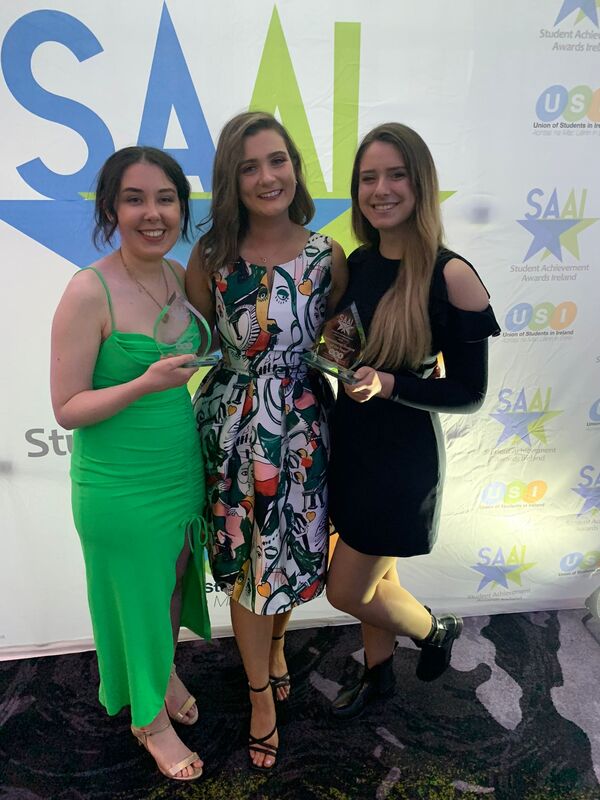
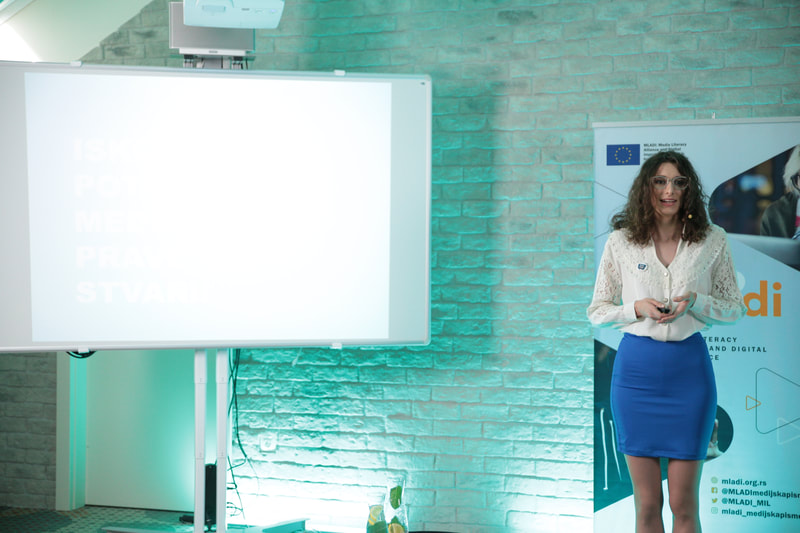
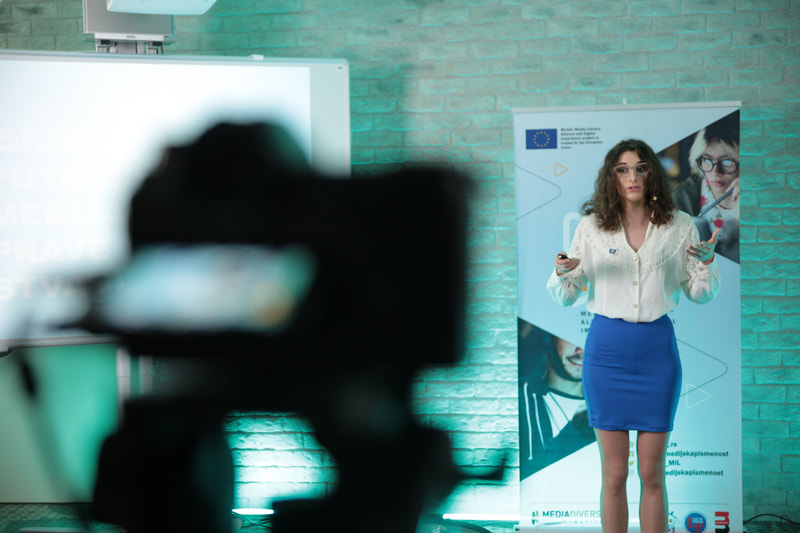
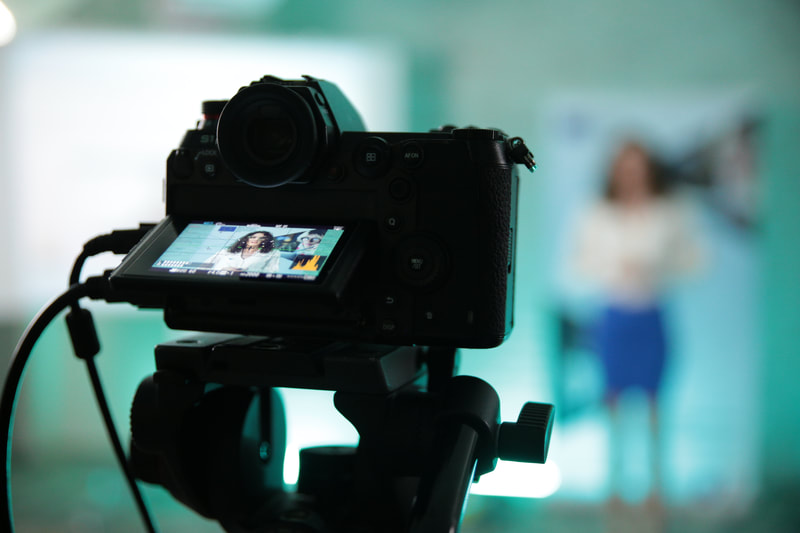
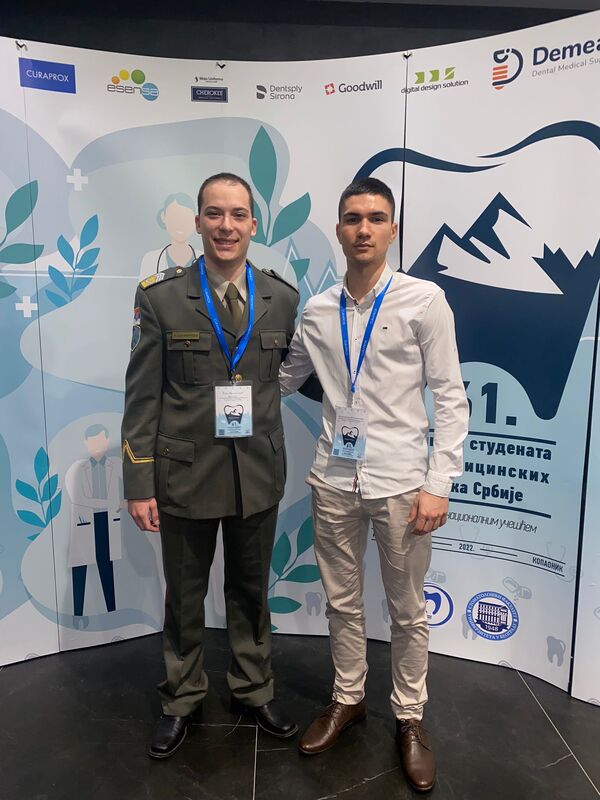
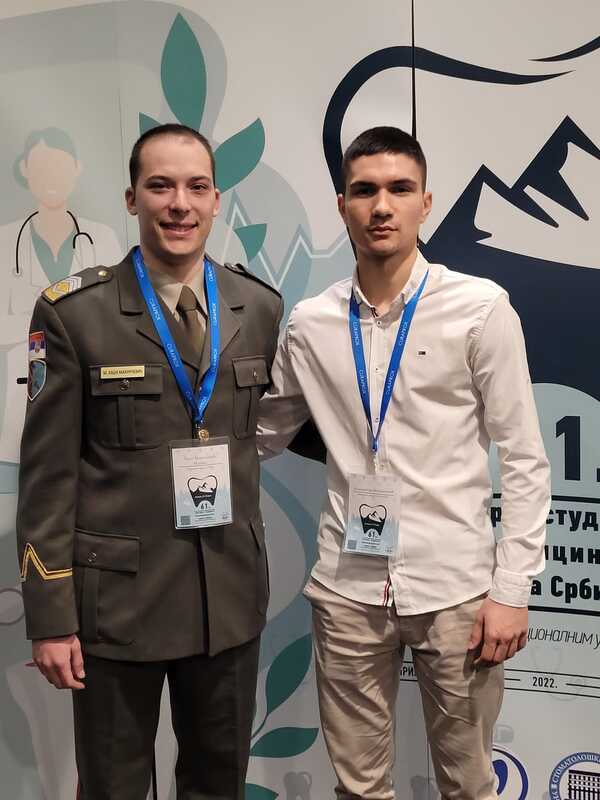
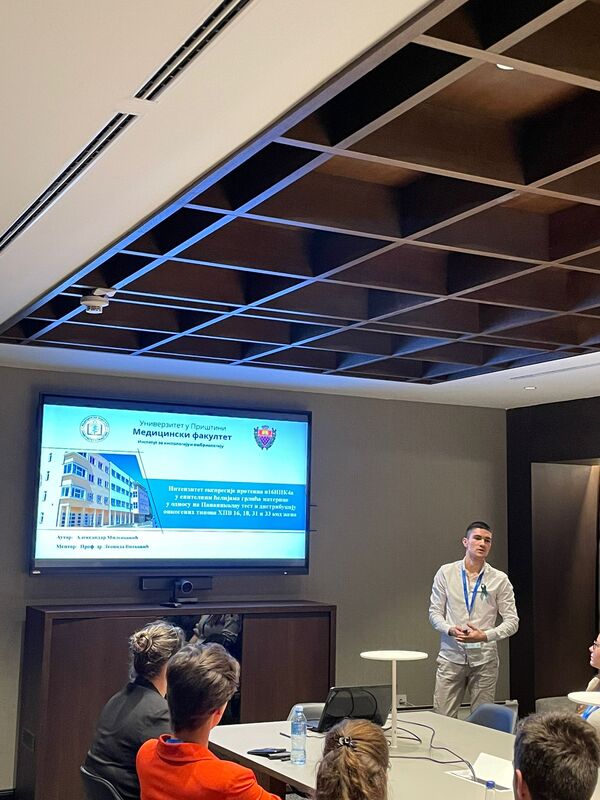
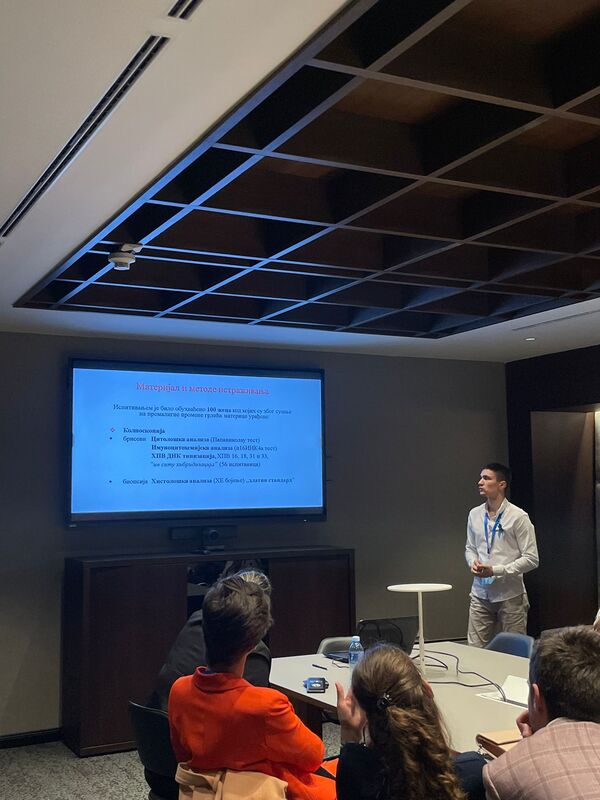
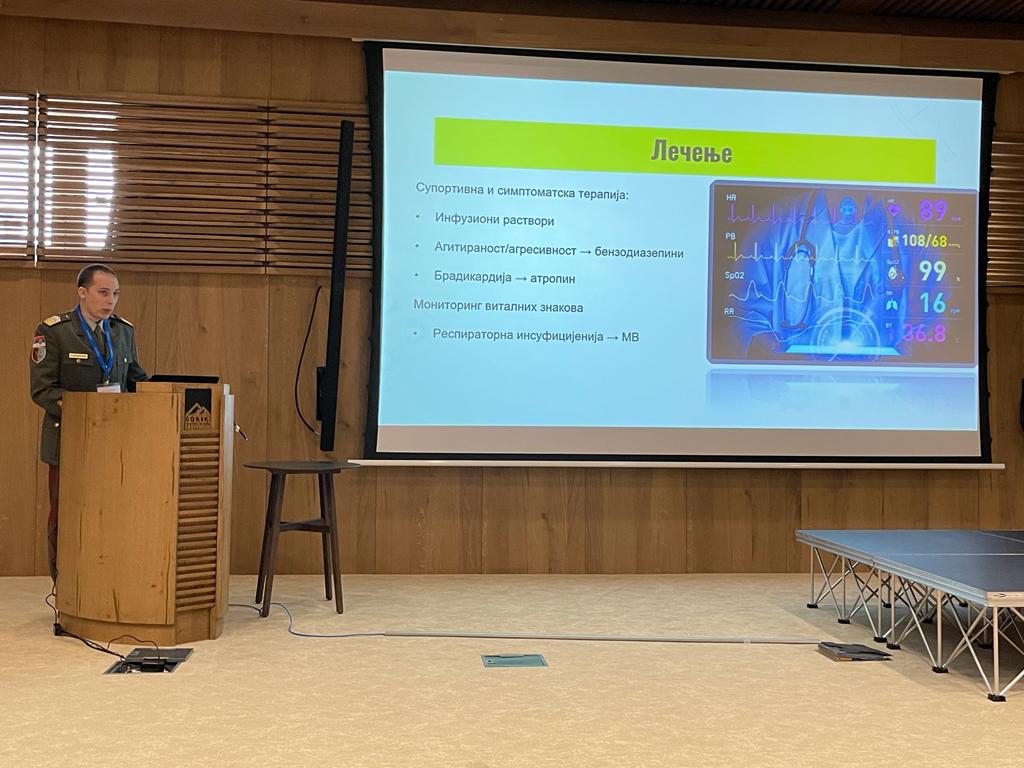
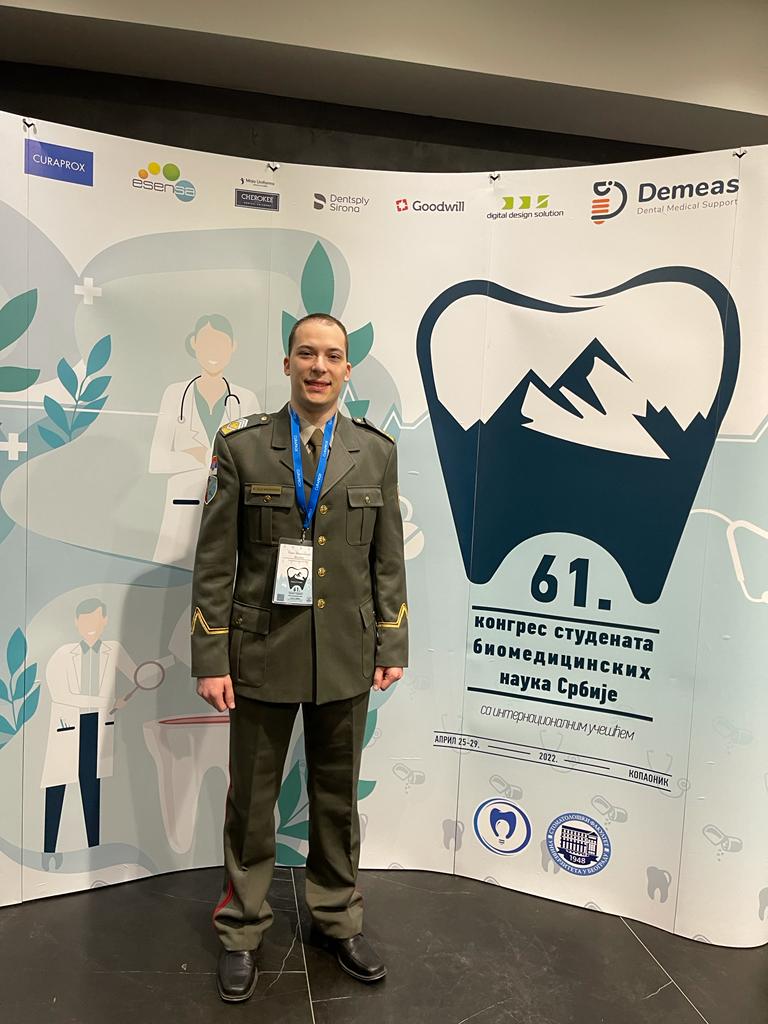
 RSS Feed
RSS Feed
